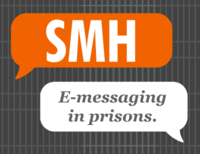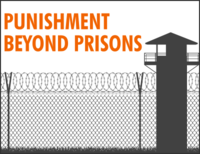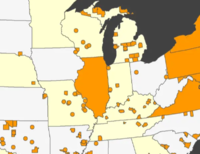Seven facts about mass incarceration that sound like April Fools’ Day hoaxes, but aren’t
Fines for suicide attempts, prisons built near toxic wastelands, the overwhelming number of people in the system…it's hard to believe, but it's true.
by Wanda Bertram, April 1, 2025
We at the Prison Policy Initiative are in the business of making America’s draconian, exploitative, sprawling incarceration system more obvious to everyone. The basic facts of mass incarceration are easy to grasp when laid out in, say, a pie chart. But there are other elements of the criminal legal system that never stop boggling the mind — even for us.
For April Fools’ Day, here are seven facts about incarceration and supervision that are as hard to believe as they are hard on people in the system:
Prisons and jails maintain “welfare funds” that are supposed to benefit incarcerated people, but often use the money to shore up their budgets or spend it on treats for themselves.
When incarcerated people and their loved ones pay for phone calls or commissary goods, it creates revenue for companies, which kick back some of the money to the facilities themselves. This money is funneled into “inmate welfare funds.” But what happens to it then? In our report Shadow Budgets, we revealed that prisons and jails often use the funds not for special purchases on behalf of incarcerated people, but to shore up their own operating budgets — or even to pay for perks for themselves.
In one county — Dauphin County, Pennsylvania — the local paper exposed the jail using its welfare fund for purchases as inappropriate as fitness trackers and gun range memberships for staff.

One-third of state and federal prisons sit within three miles of federal Superfund sites.
Research warns against living, working, or going to school near Superfund sites — the most toxic places in the country — as this proximity is linked to lower life expectancy and a litany of terrible illnesses. But many incarcerated people have no choice. With many prisons located near toxic wastelands, people in prison all too often develop health problems: For instance, in western Pennsylvania, a state prison located on top of a coal waste deposit has led to skin rashes, sores, cysts, gastrointestinal problems, and cancer.
The average yearly income of someone in jail pretrial is less than $20,000.

Nearly half a million people are sitting in a local jail awaiting trial. Their average yearly income hovers just under $20,000, meaning that it’s easy to keep them locked up by imposing cash bail (the median bail amount for people detained on bail who are accused of felonies is $25,000). Women and Black people in jail have even lower incomes on average, making them even more vulnerable to being stuck in pretrial detention, which can very quickly lead to losing one’s job, losing custody of children, forgoing medical appointments, and so on. And pretrial detention doesn’t just throw someone’s life into chaos — it makes it more likely that they will plead guilty just to get out of jail.
Felony convictions may not disqualify someone from being president, but they still block people from jobs like bartending, car sales, and pest control.
19 million people in America have felony records. And occupational licensing requirements, the standards and rules that govern who can work in certain professions, often explicitly exclude anyone with any felony conviction. These rules thus lock millions of people out of jobs like nursing, sales, bartending, and firefighting, no matter the details of their conviction — making it much more likely that formerly incarcerated people will end up in low-paying, itinerant jobs rather than stable employment.
You can’t help but ask: If someone with a felony conviction isn’t barred from becoming president, why should they be barred from all of these positions that have far less power and responsibility?
Many of the 2.9 million people on probation have to take regular drug tests — which they often must pay for — even those whose convictions have nothing to do with drugs.
In our report One Size Fits None, we combed through probation rules in 76 jurisdictions and found that 62% of those places require all people on probation to submit to regular drug tests. Not only is drug testing dubiously effective in advancing any public safety goals; the rules mean that even if someone’s conviction had nothing to do with drugs, they have to get tested anyway. Worse, many of these jurisdictions make people on probation pay for their own tests, at a cost of between $15 and $20 per test (often multiple times a week).
Several state prison systems slap financial sanctions on people who attempt suicide or harm themselves.
Not only do most prisons coerce incarcerated people to pay copays to see a doctor; some actually make people pay the prison back for costs incurred through acts of self-harm. Iowa, Georgia, Nevada, and New Mexico’s policies on disciplinary fines state that incarcerated people can be made to reimburse the state if they attempt suicide or hurt themselves in prison, an environment known to aggravate mental illness. In Virginia, corrections staff recently discussed financially penalizing people who self-immolated in protest last year.
Nearly half of all Americans have an immediate family member who has been incarcerated.
FWD.us reports that 113 million adults, or 45% of all adults in America, have had an immediate family member locked up for at least one night. These figures underscore that while having a criminal record — or even having an incarcerated loved one — carries heavy stigma in this country, it is an incredibly common experience. Making the criminal legal system fair and just is not something that impacts a select few; it’s directly relevant to our friends and neighbors.

And 10 things you shouldn’t believe
While these facts about incarceration are hard to believe but unfortunately true, there are also a number of myths floating around about the criminal legal system. Head over to our recent report Mass Incarceration: The Whole Pie 2025 where we bust 10 common myths about incarceration the far too many people do believe. We cover the exaggerated impact of private prisons, phantom “factories behind fences,” the crime waves that weren’t, and more.



